The Body in Public Debate (Reflections on Physicality in the Context of the 55th Santarcangelo Festival)
In July, Santarcangelo Festival brought artistic practices centred on the body to a small town in the Italian region of Emilia-Romagna. With a dramaturgical focus on diversity and inclusion, the festival presented – through productions created in various cultural contexts – the marginalized body, the body that is walking proof of hundreds of years of history, but also the body that, through its exposure in public space, advocates for change. This year's programme of the festival, focused on contemporary performing arts, reflected prevailing social and political themes, but also the ways in which we think about the body and the role of theatre performances in the public sphere from the perspective of current theories of performing arts.
In selected productions, the body itself carries the meaning of a political statement that the performers enact through their performances. The body, which could be excluded from other public spaces, is imminently exposed with all its specificities and injuries. The body, with which we come into direct contact during the performance, speaks for itself and for other bodies with a palpable urgency. In the chosen performative practices, the performers use their own bodies as dramaturgical material on which they base their narratives. In this way, they demonstrate that we engage in public debate not only on an intellectual level, but also on a physical one.
The Body as an Archive of Violence
The body has become a place that tells the story of sexualised violence and the society that tolerates it in the production BOUJLOUD (man of skins) by Moroccan multidisciplinary artist Kenza Berrada. In her practice, she develops a language that explores the boundaries between reality, myth and metamorphosis into a fantasy body. The moment of transformation was central to the production presented in Santarcangelo. The artist used a character that appears in traditional Moroccan rituals: Boujloud. According to legend, he abused women in a sacred place and was therefore transformed into an animal man. This hybrid on the border between the human and animal realms is thus associated with the principle of divine punishment. In her production, Berrada takes on the form of a character clothed in goat or sheep skins. However, she does not roam the streets of Morocco, dancing joyfully to the sound of drums and striking the women present with a rod or piece of leather to increase their fertility, as is traditionally done in Morocco during the festivities. Instead, she tells the stories of abused women and accuses both the perpetrators and a society whose laws do not punish these crimes.
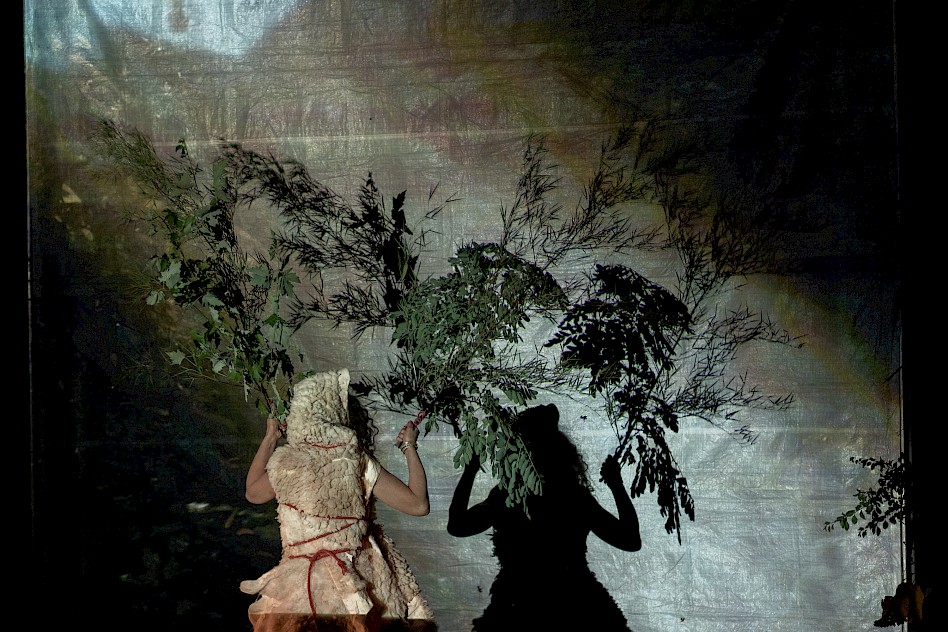
Berrada uses her body, wrapped in sheepskins, to convey the stories of dozens of women she has interviewed. They share similar traumatic experiences, from which Moroccan legislation only began to protect them in 2018, and even the new law still does not address the issue of sexualised violence in its entirety. Moroccan law also has significant shortcomings, such as the fact that rape within marriage is still not recognised as a criminal offence. Berrada's body thus takes on the role of a living archive of stories of women who would otherwise not be heard under the current conditions. The archival turn in art is discussed in connection with the publication of Michel Foucault's The Archaeology of Knowledge (1969), which provided the impetus for examining the public archive as a set of power relations that determine what can be stored and preserved. After 2000, the turn also found its way into dance theory, which by its very nature as a live art form makes archival preservation impossible.[1] Records through other media can never capture the "here and now" of a dance performance. On the contrary, new live performances of choreographies will never be the same as the original ones; gaps and shifts in their representation will naturally arise.
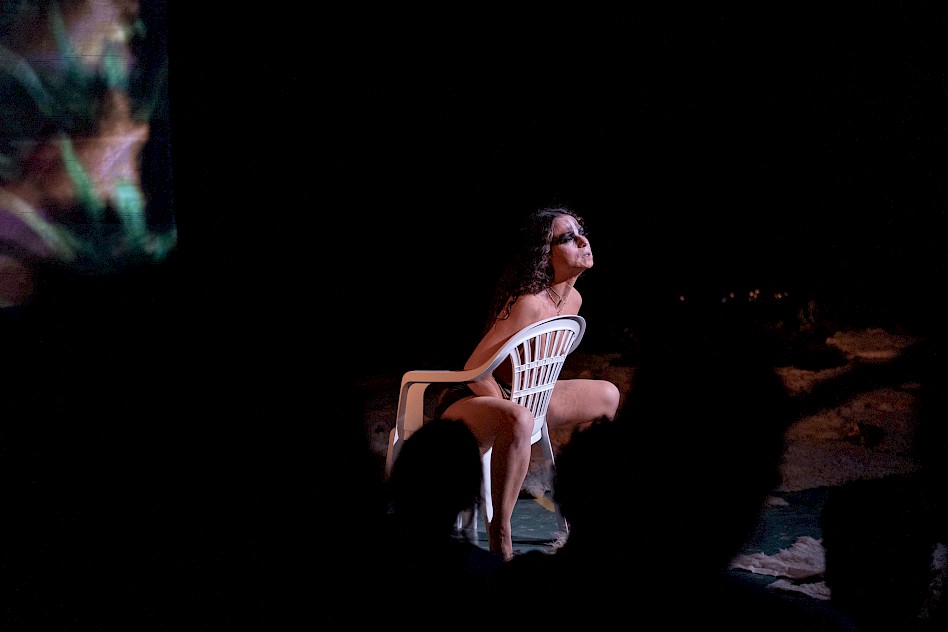
The distance that arises within the art viewed through the prism of the archival turn is linked by theorist Jitka Pavlišová to the act of reenactment. It does not attempt to be a faithful reconstruction – just as Berrada did not attempt to faithfully reconstruct the celebrations associated with the figure of Boujloud – on the contrary, it can reveal the political and institutional problems of what is being depicted from a visible distance. The figure of Boujloud, who pursues women during Moroccan celebrations in order to increase fertility, is an inconspicuous yet apt reminder of tolerated violence and the constant sexualisation of women. This attitude, which is deeply rooted in folklore, permeates the current social system and Moroccan legislation.
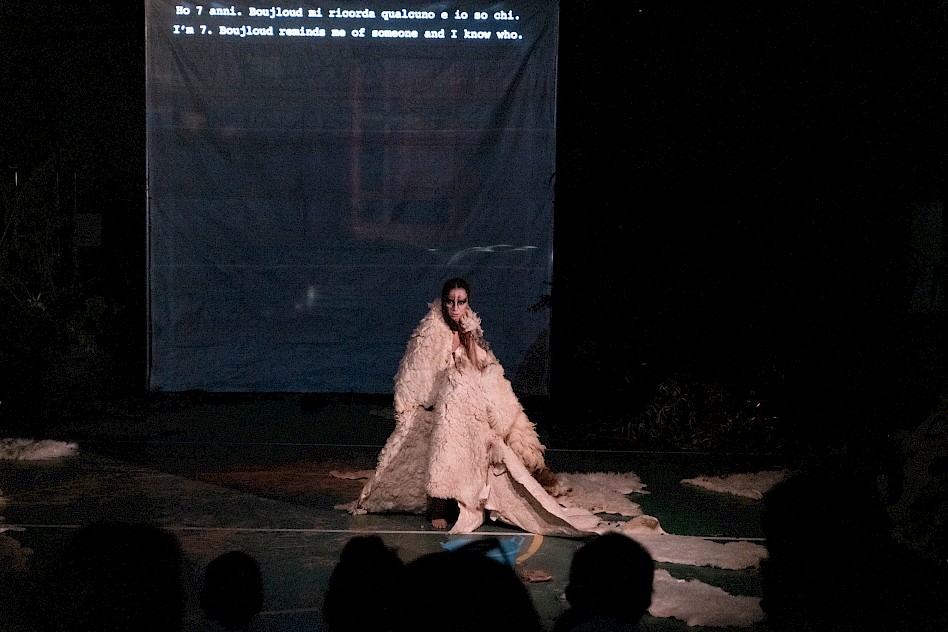
The dancer's or performer's body itself can also become an archive that highlights problematic attitudes, recontextualising history through reenactment and emphasising distance. In dance theory, the archive becomes a temporary situation defined directly by its use, which means that it can arise anywhere we begin to relate to ourselves or our surroundings as an archive.[2] This is also the case with Kenza Berrada's body, which conveys the stories of dozens of women facing injustice, using a mythical Moroccan figure that is placed in a new context in the production. Boujloud no longer threatens women, but protects them.
Gaze and Power
Brazilian multidisciplinary artist Jéssica Teixeira also drew on the history of oppression. In her production, Monga, she reflects on the fate of Julia Pastrana, a Mexican woman known as the "Ape Woman". In the 19th century she was sold to a circus, exploited in a freak show, and even after her death, she could not escape the stares directed at her physical differences caused by hypertrichosis. Instead of a proper burial, she was exhibited as a curiosity and transported around Europe. Her remains were not returned to Mexico until 2013. She was an artist, singer and dancer in her own right, yet very little is written about her on the internet to this day. Articles about her are mostly limited to her physical appearance and medical explanations of her "peculiarity". By placing her character in a contemporary subversive performance, we can view her more comprehensively and reimagine and commemorate her legacy in a better way.
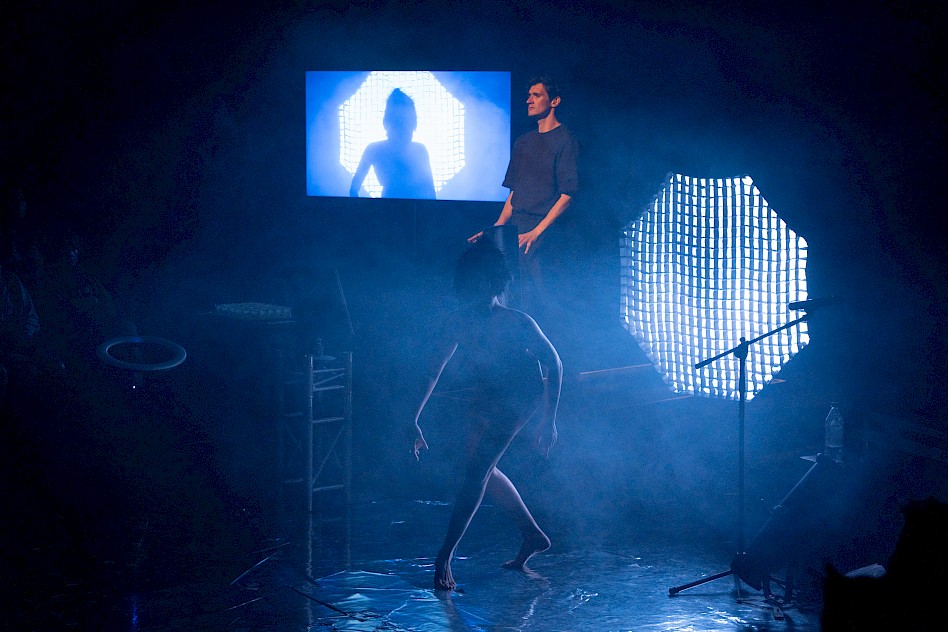
Teixeira's research focuses on the body, difference and the gaze of others. In doing so, she herself uses her foreign body, which she exposes to the gaze of the audience. Right from the start of the performance, however, she overturns the rules of the position in which other bodies are normally found. She asks the audience questions that leave them perplexed. She returns their gaze with tenfold intensity. In this sense, the gaze represents a manifestation of domination, as Michel Foucault formulated in his reflections on the panopticon.[3] The theory is originally based on the architectural design of a prison with a central watchtower and describes a state in which prisoners are made to feel consciously and continuously observed. That ensures the automatic functioning of power. This dynamic is easily applicable to other social systems – or indeed to the performing arts – in which the gaze carries power.
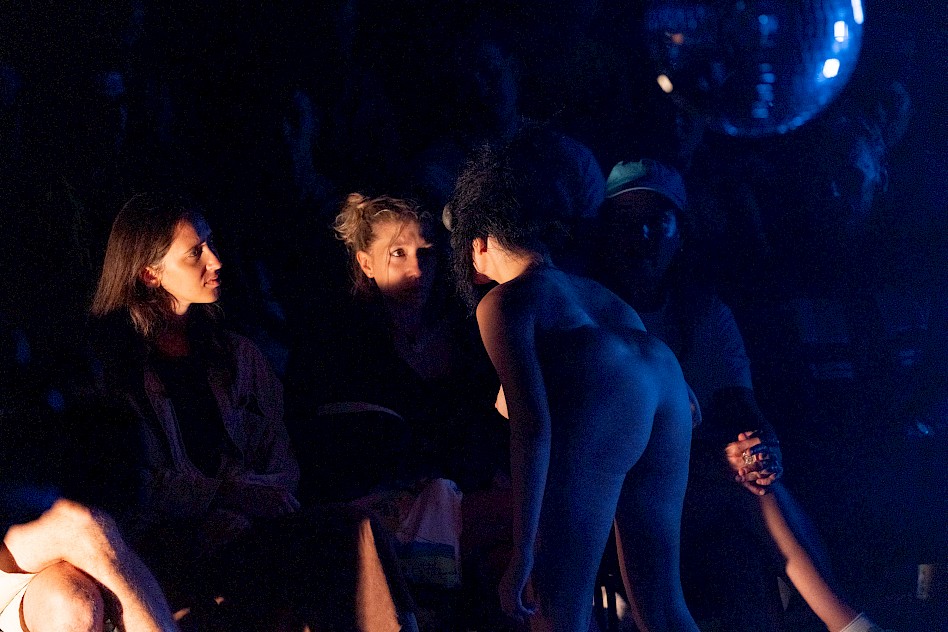
The performer is able to reverse the one-sided dynamics of the freak show, where power traditionally belonged to the watching majority, by utilising and subverting the specifics of the encounter with the audience during the performance. No performance could exist without the presence of gazes and their distribution. In most cases, we are accustomed to the traditional arrangement of a spectator-watched performer. However, unlike Julia Pastrana, Jéssica Teixeira has the opportunity to change this primary setting. The performer's unyielding gaze at the audience gradually melts away: first in shyness, when the audience responds to her intimate questions about their greatest fears, desires and ideas about death, then in a shared toast with cachaça, and finally in a collective dance on stage. There is no longer a dominant gaze that degrades another body. Only a shared encounter.
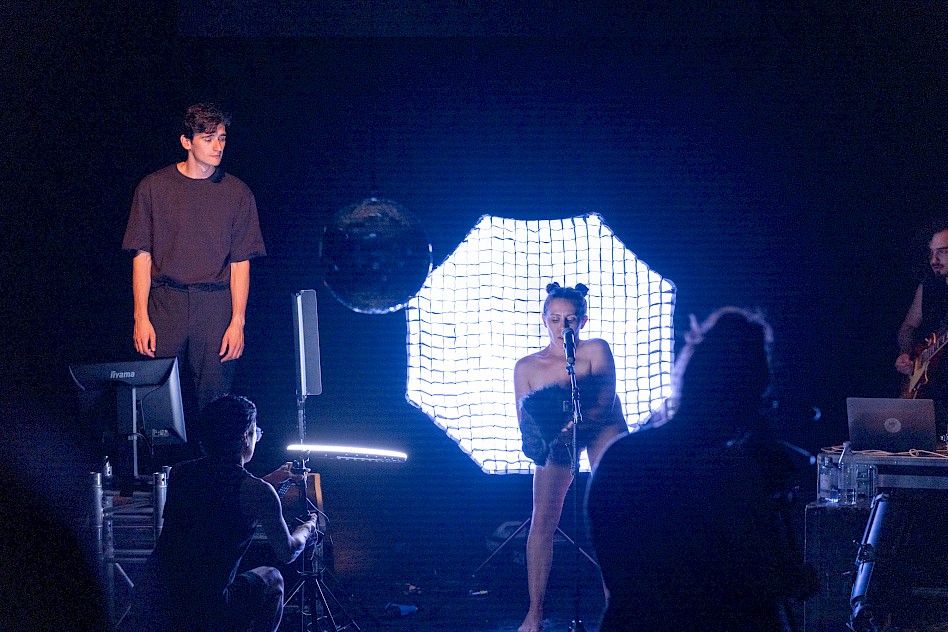
Theatre in the Public Sphere
Productions that aim to reflect on and reimagine the history of oppression inevitably enter into public dialogue. In the context of these works, we must therefore consider the place of performing arts within the public sphere as a whole. In his book The Theatrical Public Sphere[4], theorist Christopher Balme bases the dynamics of theatre performance and the public sphere – which he understands primarily as public debate – on the concept of distributed aesthetics. This seeks connection between the concepts of aesthetics and the rapid exchange of information as we know it from the internet, where distance plays no role. Because the concept of the public sphere has expanded as a result of globalisation, and debate can take place between people thousands of kilometres apart, it is all the more difficult to relate this concept to theatre, which is based on the presence of the "here and now". Balme thus expands the model in which the effect of theatre is not limited to the "here and now" and relates it to the contemporary theatrical language: a performance can be a kind of centre around which its own theatrical public sphere is created.
Within this sphere, discussions can arise about a shared aesthetic experience, which can expand into other debates through the themes touched upon by the works. Balme points out that this aspect is often overlooked in reflections of performing arts, even though it can significantly influence the aesthetics of the works in question. These works can count on a public exchange of points of view in the performance itself, or even aim directly at it, perhaps even more than aiming at an aesthetic experience.
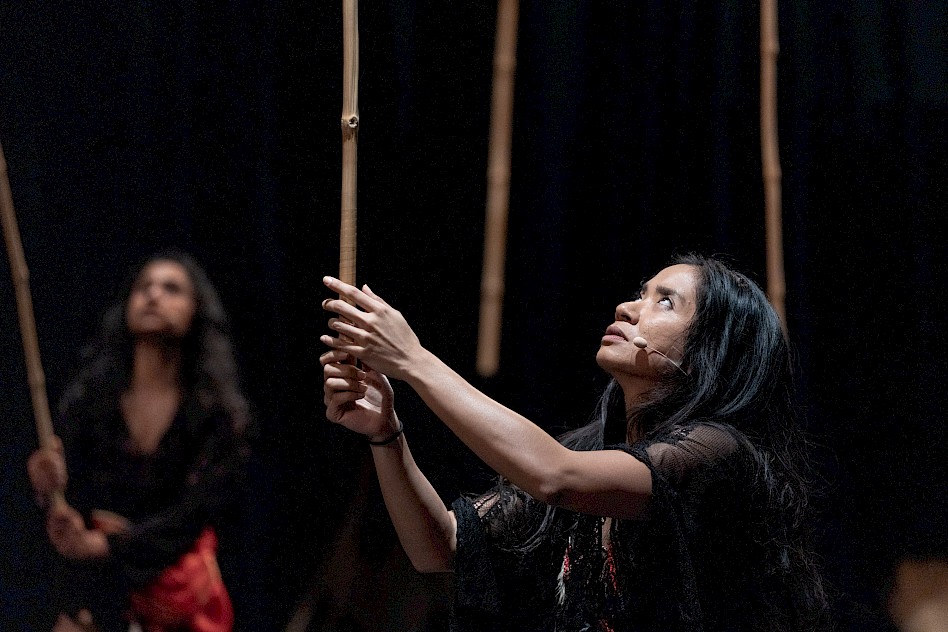
In Magic Maids by Eisa Jocson, a multidisciplinary artist from the Philippines, and Venuri Perera, an independent artist from Sri Lanka, the auditorium is shaped like an arena with a fully lit hall, adapted in advance for public debate. In their work, the artists address the topic of migrant care work and the exploitation of female labour in general. They link these phenomena to the history of European witch trials, finding several parallels between the figures of the witch and the female caregiver. They describe both types of women as powerful and powerless, feared and revered, and above all exploited, accused and discarded.
To substantiate their assumption, the artists use the fact that the last woman executed for witchcraft in Europe in 1782 was a Swiss maid named Anna Göldi. She worked for a doctor, by whom she became pregnant. She was then asked to help treat his married daughter, as she was knowledgeable about herbs. The daughter did indeed feel better after being treated with herbal ointments, but Göldi was nevertheless thrown out of the house and accused of witchcraft. After prolonged torture, she finally confessed to the crime. Jocson and Perera follow up on her tragic fate with stories they have heard in their surroundings, in which care workers from the Global South have been accused of various crimes, discredited in other ways, and generally oppressed in the workplace.
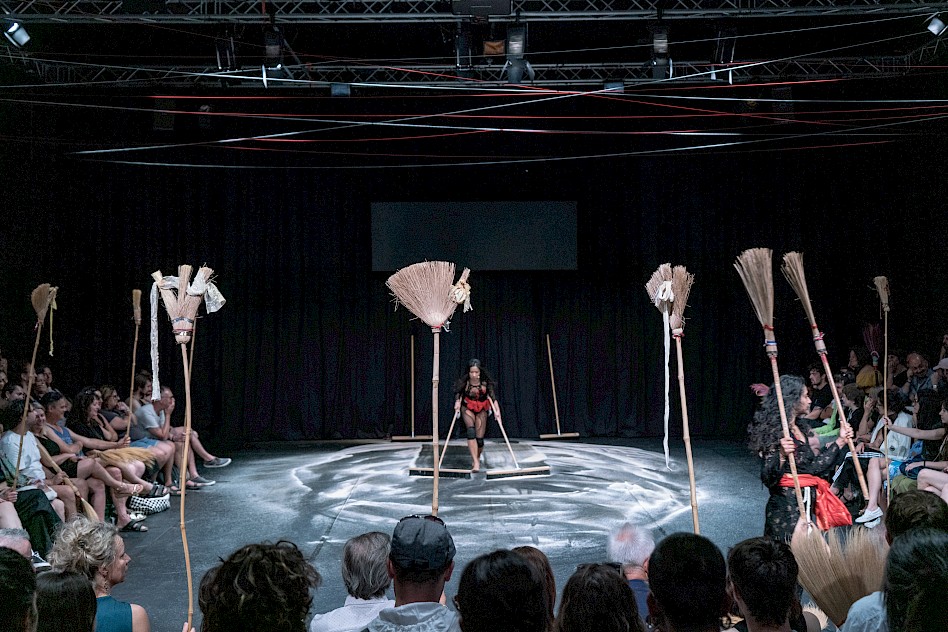
Both women depicted – the witch and the caregiver – share a common attribute: a broom, which can be a cleaning tool, a means of transport, or a manifestation of power. Jocson and Perera use these tools, which are extensions of their bodies, for a liberating ritual dance. At the beginning, they slowly sweep the floor with their brooms, but gradually the tools begin to take on a life of their own, thrashing about in increasingly wild movements, as if the power were coming not from the dancers but from the brooms themselves. Their magical tools rebel against the chaining and oppression of women. The combination of dance and historical stories highlights the similarities between migrant workers and witches; both are viewed through the prism of a narrative shaped by the powerful. The artists confront the audience with this directly. Similar to Teixeira, they ask the audience slightly invasive questions, thus engaging them in a public dialogue. They do so from the position of women of nationalities often performing care work in countries of the Global North.
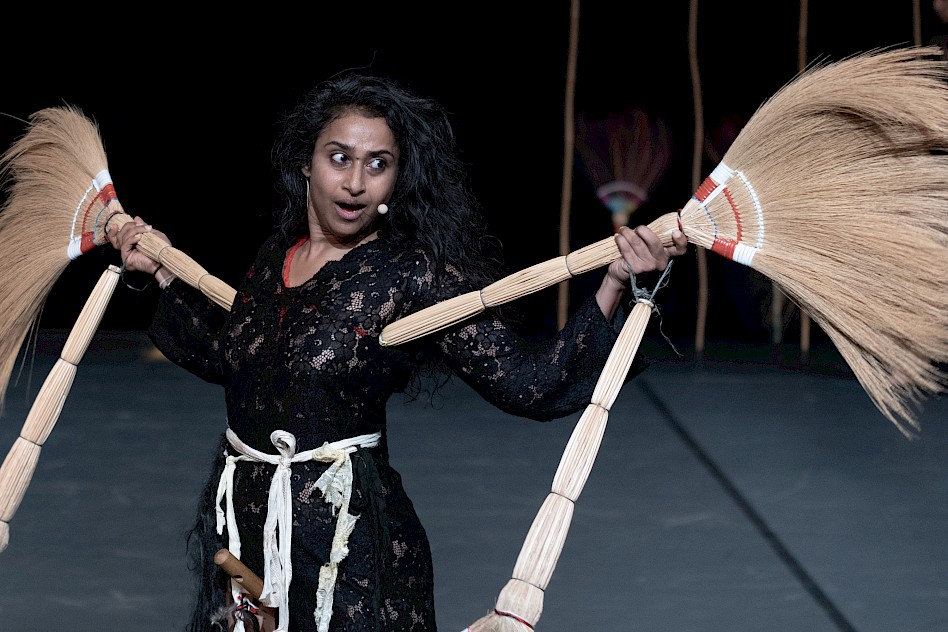
The slight tension and uncertainty that this communicative situation evokes can gradually give rise to a contribution to the public sphere, which emerges when the conversation shifts to questions that fundamentally concern society as a whole and that we encounter directly during the performance. In the theatrical public sphere, the debate in the context of the Santarcangelo Festival is initiated primarily by the performative practice with various types of bodies which, like archives, record and commemorate oppression. There are bodies that change power dynamics through performance, and bodies that directly invite the public to reflect and share. The exchange of ideas can remain on a physical level, where themes are experienced collectively through physical coexistence. However, it can also move on to verbalisation, as in the case of people who have been drawn into dialogue by the performers, as well as all those for whom relating to society-wide topics does not end with the performance, but opens up further conversations afterwards.
Kristýna Vinařová
[1] FOELLMER, S. The Archival Turn in Dance/Studies. Theatralia, 25 (2), s. 129-147. 2023.
[2] PAVLIŠOVÁ, J. Rekonstrukce. Reenactmenty: Archivní obrat v současném tanci a performanci. In: PAVLIŠOVÁ, J. Aktuální tanečněvědný diskurz: Obraty v současném tanci. Univerzita Palackého v Olomouci, 2022, s. 93–110. ISBN 978-80-244-6006-2.
[3] FOUCAULT, Michel. PELIKÁN, Čestmír. Dohlížet a trestat: kniha o zrodu vězení. Praha: Dauphin, 2000.
[4] BALME, Christopher. The Theatrical Public Sphere. Cambridge: Cambridge University Press, 2014.




